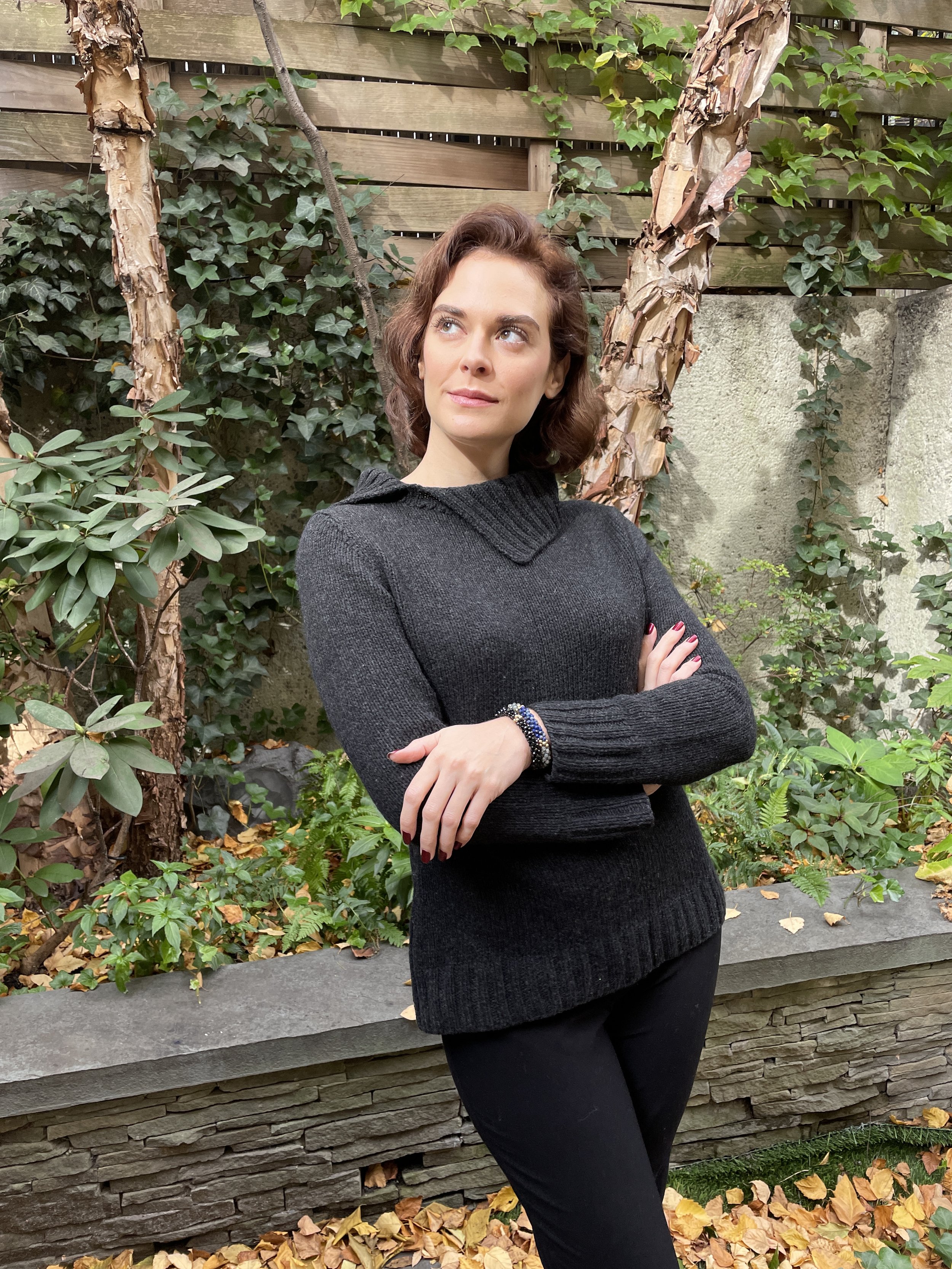RENAISSANCE: NEW LIFE FOR OLD PATTERNS
IT’S AUTUMN IN NEW YORK AND FOR THE FIRST TIME EVER, I DID A PHOTOSHOOT HERE.
Even though I like to think of my pieces being worn just about anywhere there is sweater weather, it was incredibly satisfying to get to re-envision some of my oldest designs through the lens of this city I love; its fashion, its people and its many moods.
LADY YAK is the first sweater design I ever published. Although it looks very simple, I filled it with of all the things I could never find in a pattern. Full-fashioned shoulders, tubular cast-ons, full-fashioned decreases…and my favorite part—the face-framing split turtleneck which is knit separately for a *perfect* tubular edge and back-stitched to the neckline. The tutorial for this technique is also the first I ever created.
And it’s a quintessentially New York sweater to me. Black, sleek, subtle and timeless.
When I first wanted to publish it, all of my friends and yarn store colleagues encouraged me, except that… no one ever published a black sweater. It’s unseeable, unphotographable, and outside of New York, black just doesn’t have the same appeal. Its working title was “Nothing to See Here”. But I persisted, did the best I could with the photos and got it out into the world.
But now at last I’ve had the chance to show you that there is indeed, something to see here.
























